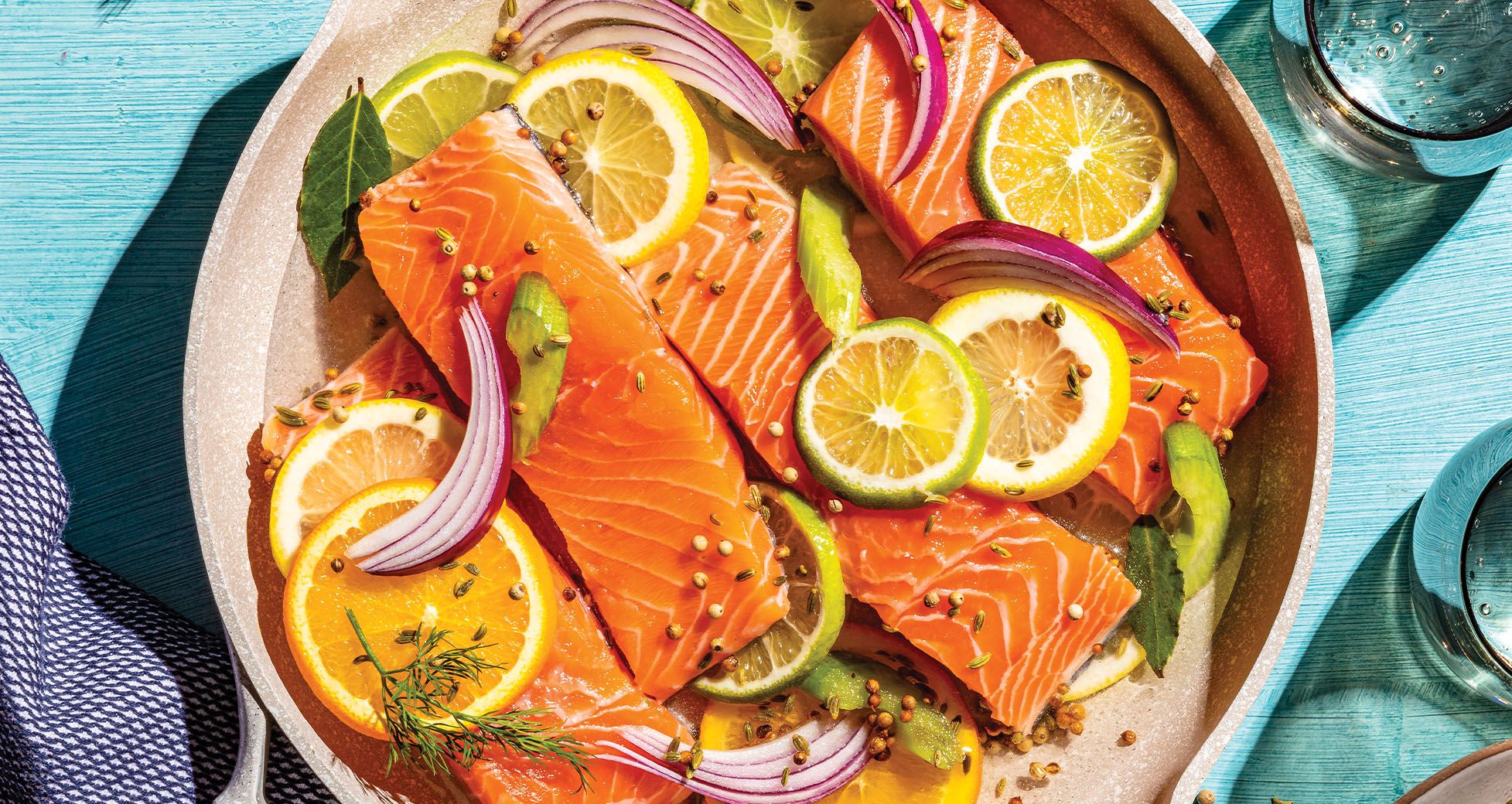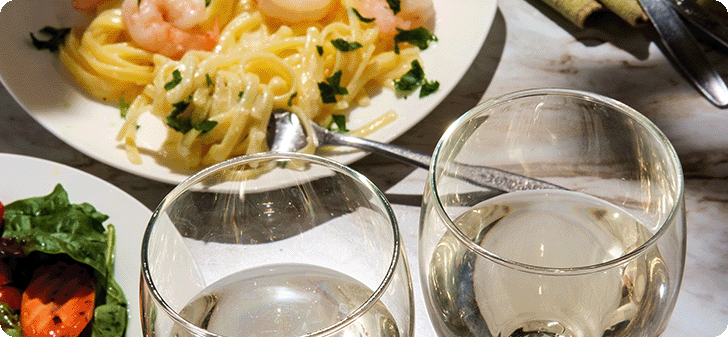Seafood Cooking 101
Think fish is out of your wheelhouse? Think again! With a little kitchen know-how, seafood can be just as simple as your go-to weeknight staples. If you’re looking for a special type of seafood, be sure to talk to one of our seafood teammates about special ordering in-season seafood.

Ways to Cook Seafood
Poach
Defined: to cook by fully submerging food in a barely simmering liquid such as wine or olive oil.
Tip: The lower temperatures used in poaching help to prevent overcooking. To infuse even more flavor, try adding sliced produce, herbs and spices to your cooking liquid.
Bake
Defined: to cook by surrounding food in even, dry heat.
How to: Brush fish with oil, season as desired and arrange on a prepared sheet pan. Bake at 350-450 degrees (depending on the size of your fish) flipping fish halfway through cooking.
Sauté
Defined: to cook using a small amount of butter or oil in a shallow pan over medium to high heat.
Tip: Sautéing creates a crispy crust while leaving the center tender and moist—just be sure to get the pan nice and hot before adding your fish.
Fry
Defined: to cook by partially or fully submerging in hot oil.
When to use: Frying is best for seafood with a neutral flavor like shellfish and lean white fish. Pan-frying works well for fillets whereas deep frying is a better option for small, irregularly shaped varieties.
Broil
Defined: to cook by exposing food to direct, radiant heat from above.
How to: Place an oven rack a few inches from the broiler. Brush fish with oil or a glaze, season as desired and arrange on a prepared sheet pan. Broil, flipping once halfway through, until crispy on the outside and cooked through on the inside.
Grill
Defined: to cook by exposing food to direct, radiant heat, commonly from below.
How to: Grilling works very similarly to broiling, except the heat is coming from the opposite side. Instead of arranging on a sheet pan, place fish directly onto the grate of a preheated grill.
Steam or Boil
Defined: to cook by heating in a boiling liquid (like water, stock or bloody mary mix) or its steam.
When to use: While these methods are traditionally reserved for shellfish, steaming can be used as a lighter way to prepare most seafood. To steam, simply place a steaming basket into a pot above a couple inches of boiling liquid.
Sear
Defined: to cook by exposing the outer surface to high heat for a short period. This method is primarily used to create a flavorful, crust while keeping the inside tender and moist.
How to: Add butter and/or oil to a nonstick pan and heat over medium-high. Season seafood all over and add to pan. Cook without turning until bottom is golden brown and crisp, then flip. Once both sides are golden brown and seafood is opaque in the center, it's cooked through!
Seafood Recipes
Let's Go Fishin'
Learn the different types of seafood.
Shellfish
Crab, crayfish, lobster, mussels, oysters, scallops, shrimp
White, Lean & Flaky
Black sea bass, flounder, red snapper, tilapia, rainbow trout
White, Lean & Firm
Catfish, haddock, cod, halibut
White, Firm & Oily
Albacore tuna, white sea bass, Chilean sea bass
Medium & Oily
Arctic char, mahi-mahi, yellowfin tuna
Dark & Oily
Anchovies, herring, mackerel, sockeye salmon, sardines
Nothin' Fishy Here
Fish doesn’t have to smell… well, fishy. Follow these tips to keep your food (and your home) smelling fresh.
Choose the Right Fish
Oily fish will produce stronger smells while cooking than their leaner counterparts; see our chart on the right.
Call on Citrus
Citrus is great at cutting through odors. Try including options like lemon juice, lime zest or orange slices in your next meal.
Start Fresh
Seafood should smell light and sweet. When shopping or defrosting, keep in mind that fish should be prepared sooner rather than later.
Consider Your Method
High-heat cooking methods like frying and sautéing tend to produce a stronger scent. To minimize this, opt for poaching or steaming.
Beat It With Bleach
An open cup of bleach in the kitchen will combat all kinds of odors—just make sure to keep it far away from the food.

Dietitian Pick Seafood Recipes
Looking for dietitian-approved seafood dishes? Find them in our Healthier Habits recipe library! Don't forget to join Healthier Habits for free tools to support a healthier lifestyle, including exclusive discounts on Dietitian Pick items.


















